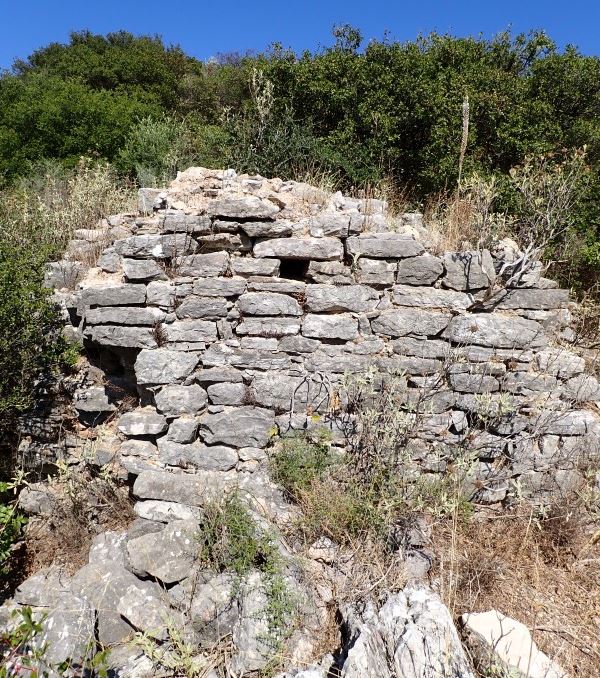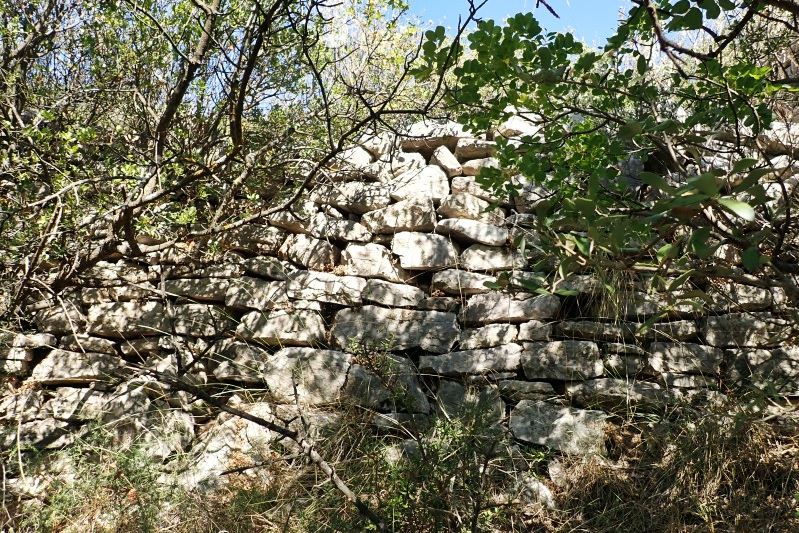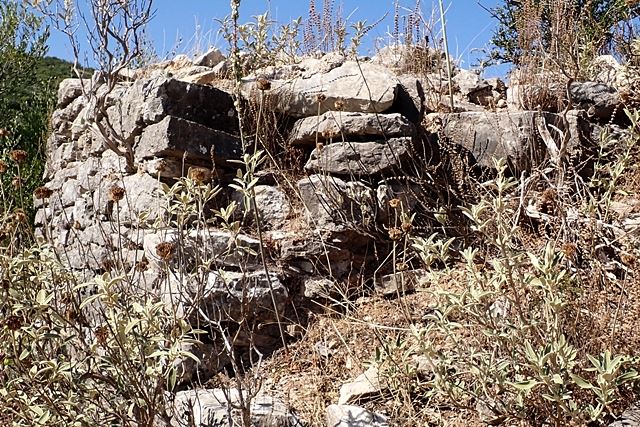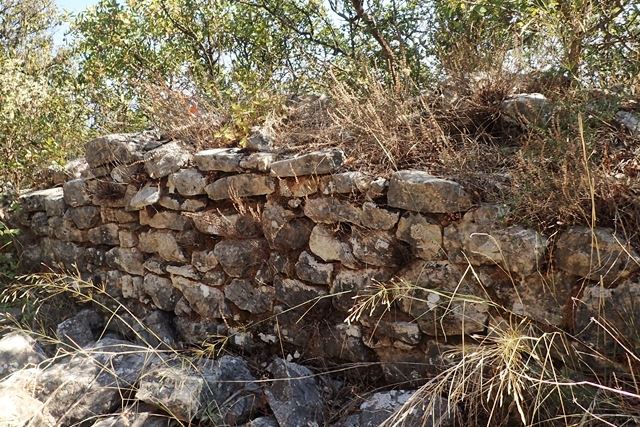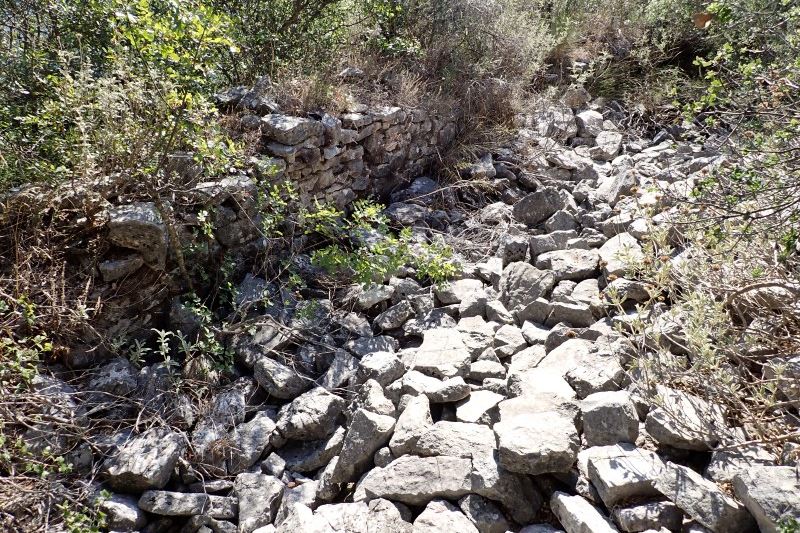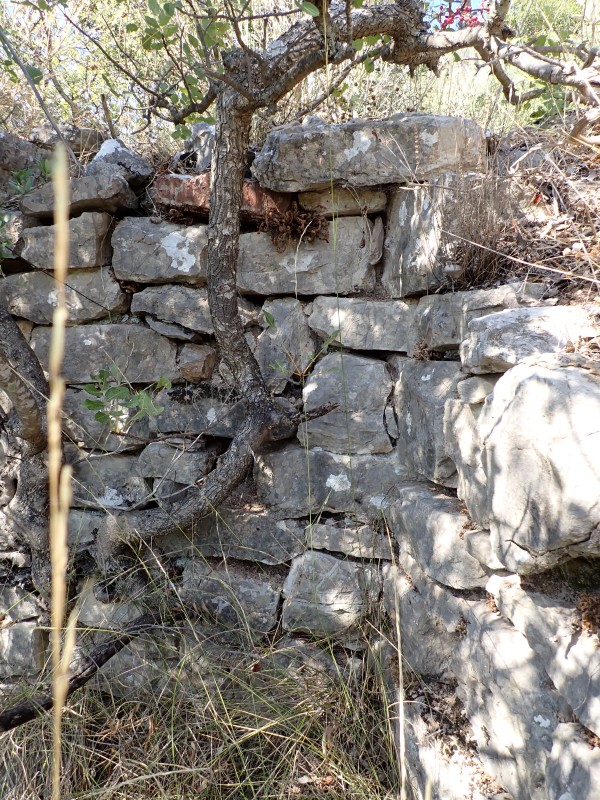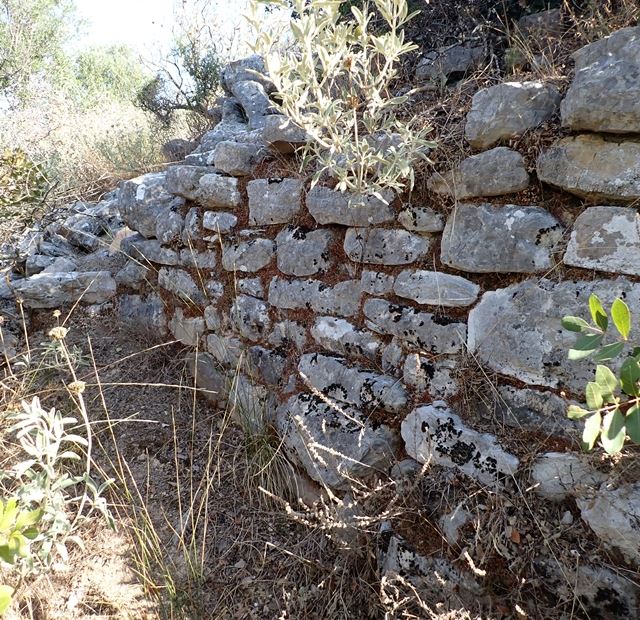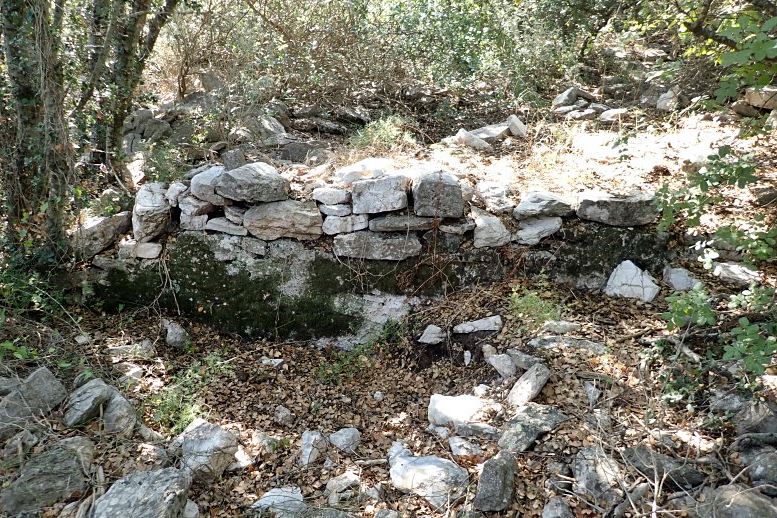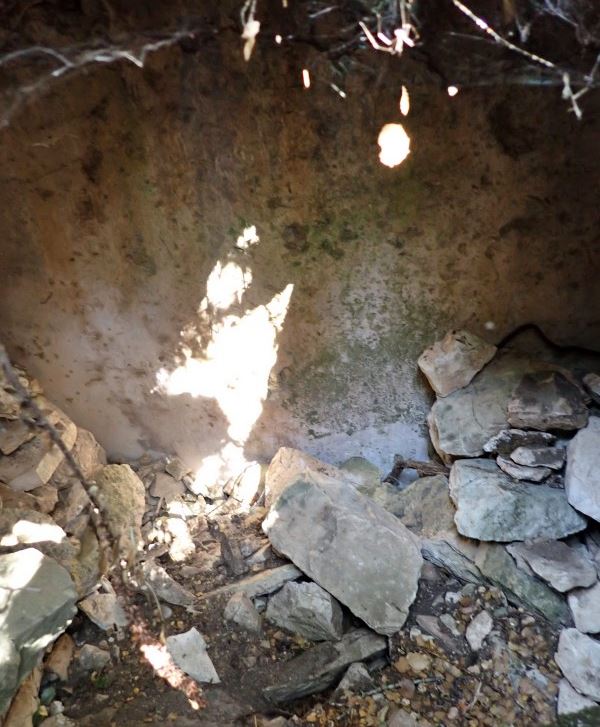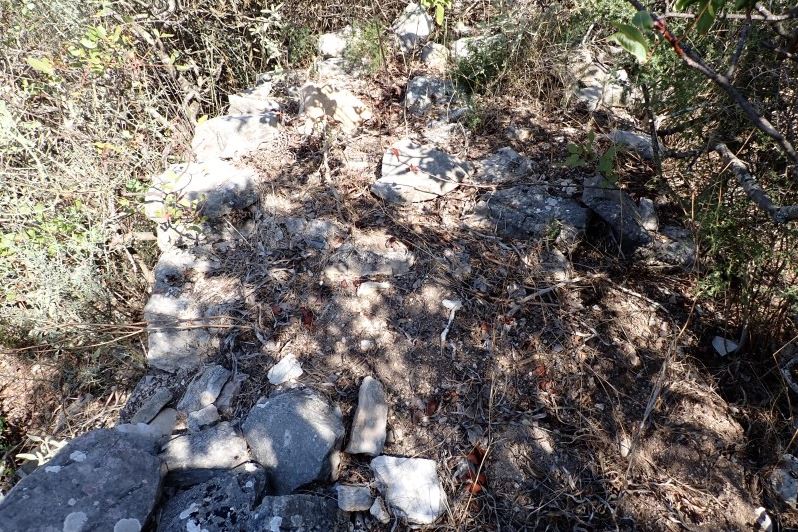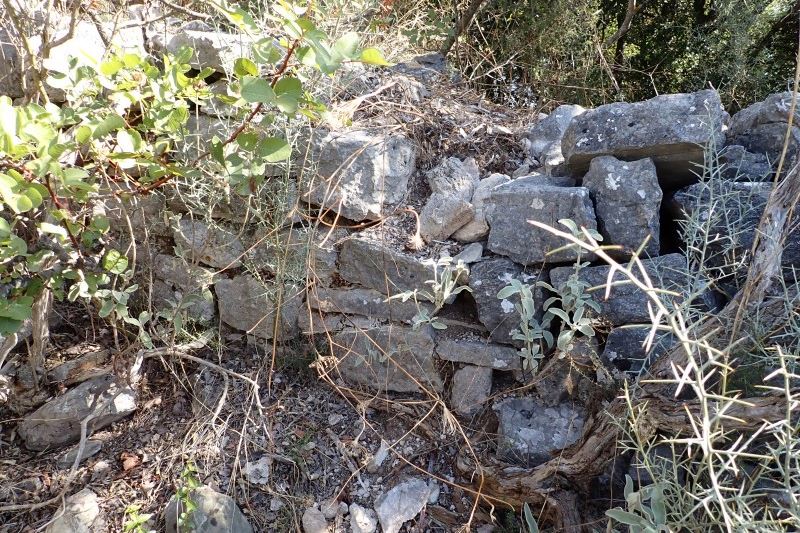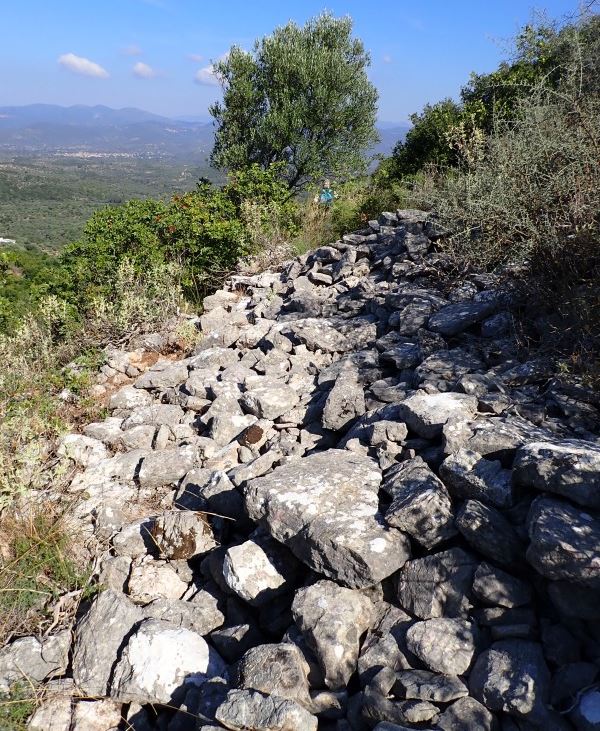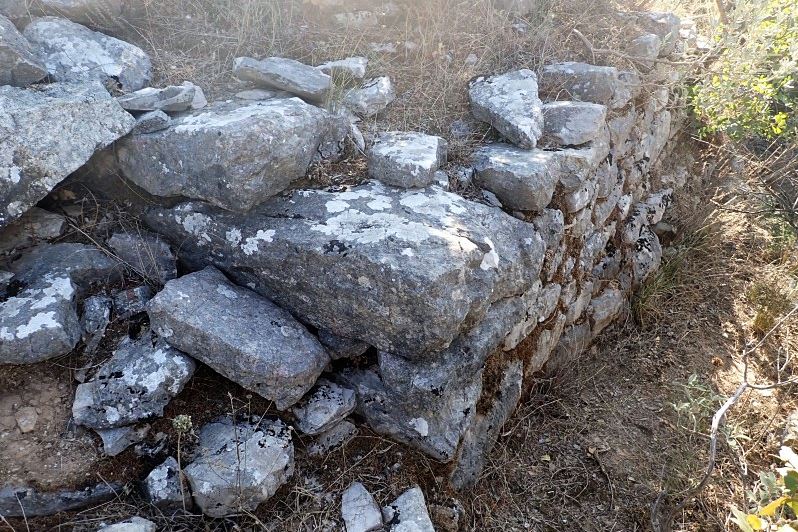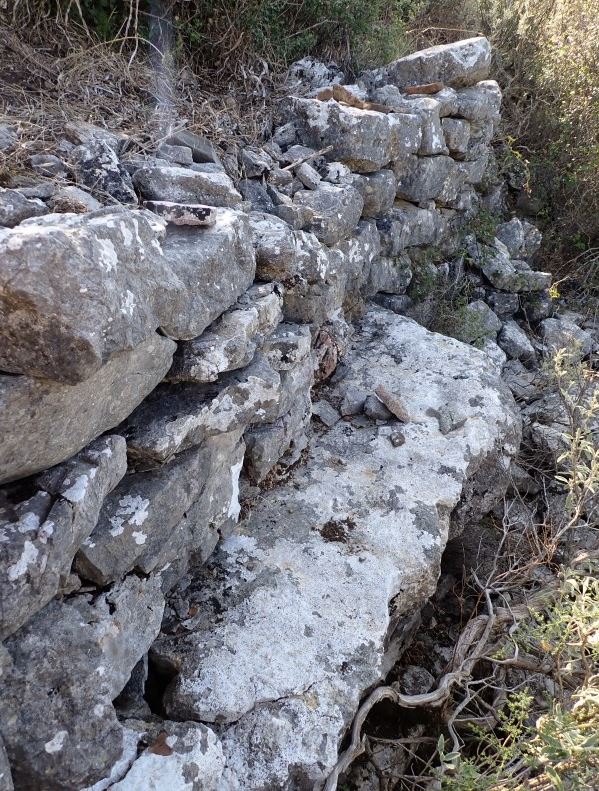Aetos, Trifyllia, Messenia,Peloponnese
Castle of Aetos
| Location: |
| On a hill about 1 km east of the village Aetos of Messinia. |
| Region > Prefecture: | 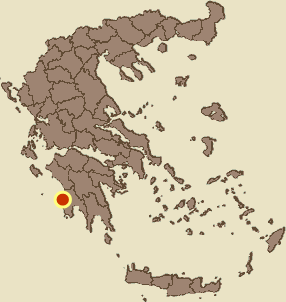 |
| Peloponnese Messenia | |
| Municipality > Town: | |
| City of Trifyllia • Aetos | |
| Altitude: | |
|
Elevation ≈ 450 m (Relative Height≈100 m) |
| Time of Construction | Origin | |
| 14th century probably | FRANKISH |
|
| Castle Type | Condition | |
| Castle Ruins |
Few Remains
|
Few remains of a small Frankish castle on a hill named Paleokastro around 1 km east of the village Aetos in Messinia.
Judging from the ruins, the hill of Paleokastro was in use since prehistoric times. There are traces of a Mycenaean acropolis there. It is probable that it was also in use during the Middle Byzantine Period, while later, during the Frankokratia, a Frankish castle was created on the hill.
History
In the late 1960s the American archaeologists McDonald, William A. and Richard Hope Simpson, as part of the University of Minnesota Messenia Expedition investigated the hill of Paleokastro and recognized a prehistoric use of the site, while nearby, 100m NW of the castle, they identified an abundance of prehistoric pottery.
In this case, the term “prehistoric use” refers to the Late Helladic Period - LE II (or the Late Bronze Age for Greece) before 1400 BC, during which the Mycenaean civilization developed.
Later there must have been a Byzantine settlement on the hill, while a small castle was built there during the Frankish period.
It is not known exactly when the Frankish castle was built and by whom. It is mentioned for the first time by historical sources in the 14th century, as a fief of a certain Le Maure.
Aetos belonged to the barony of Arcadia (i.e. Cyparissia) which was not among the original 12 baronies of the Principality of Achaea, as Cyparissia and its territory were among the personal possessions of the Prince of Achaea. The barony was formed after 1261 (and after the recovery of Constantinople from the Latins) and was given by Villehardouin as compensation to the French nobleman Vilain I d'Aulnay. In 1324 Agnes d'Aulnay, granddaughter of the first baron, married the master of Saint-Sauveur and of Aetos Etienne Le Maure. Thus Le Maure became baron of Arcadia. Apparently, Le Maure was already the owner and feudal lord of Aetos before he was promoted - so to speak - to baron.
In the 1377 inventory, which recorded the Morea fiefs of Queen Jeanne I di Napoli offered for rent to the Knights of the Order of St. John of Rhodes, the castle of Aetos is mentioned as a manor of signor dell' Archadia together with the castle of Sotira (Saflauro) and the castle of Arkadia. The Signor dell' Archadia at that time was Erard III Le Maure, son of Stephen Le Maure. A little later, in 1387, in Venice's negotiations with the Navarrese company, these three castles again belonged to the same signor dell' Archadia.
In Frankish historical documents the castle is referred to as Castle de l'Aigle or della Aquila. Aigle and Aquila are respectively the French and Italian words for “eagle” (Aetos in Greek).
In 1388 Erardo was succeeded by one of his daughters who married Andronikos Asan-Zaccaria. Thus, the barony together with the castle of Aetos, became part of the extensive possessions of the Zaccaria house and from the beginning of the 15th century it was bequeathed to Centurione Zaccaria who became (the last) Prince of Achaea.
In 1432, Centyrione II Zaccaria, who after his defeat by the Byzantines in 1429 was left with only the Barony of Arcadia, died. His death marked the formal end of the Frankish Principality of Achaea. The barony and its castles (along with the castle of Aetos) were inherited by his son-in-law Thomas Paleologos (one of the Paleologoi brothers who at that time were despots of Mystras).
In other words, the castle of Aetos was one of the last castles held by the Franks before the end of the Frankish rule in Peloponnese.
In 1452 the Turkish warlord Omer Turahanoglou (son of the infamous Turahan Bey) in one of the initial raids of the Ottomans caused great destruction in the Peloponnese. Sfrantzis, recounting that disaster, makes a specific mention to the destruction of the Aetos castle.
However, at that time, the castle was not completely destroyed, as according to the Byzantine historians Halkokondilis and Sfrantzis (Frantzis), in 1454, Aetos was at the center of a failed attempt to reconstitute the Frankish hegemony. Specifically, Ioannis Asan Zaccaria, illegitimate son of the last Frankish ruler Centyrione Zaccaria, escaped from the Byzantines, whose prisoner he was, and proclaimed himself Prince of Achaea in the castle of Aetos. The episode ended without further implications.
During the Turkokratia, the castle was apparently abandoned and the inhabitants moved to the current village.
Structure, Fortification & Buildings
The hill of the castle is naturally fortified from all sides except the SW where it is connected by a pass to the neighboring mountain. Access is relatively smoother from this side, since a dirt road that starts through the village of Aetos ascends the mountainside and passes behind Paleokastro and the pass on the SW side and continues to the east.
The medieval castle has dimensions of 90m✖45m. There are 3 defensive towers on the W, E and SE sides. The towers are square with dimensions of 5✖5m. Of the towers, the eastern one (photos 1, 3) is preserved in fairly good condition.
Bonding mortar has been used in most of the walls and defensive towers, which is an indication of medieval construction. Approximately in the middle of the castle, at the top of the hill, is the central tower (keep) measuring 5-6m. approx., which is surrounded by a small fortified enclosure of 20✖30m.
Within this inner enclosure and near the base of the central tower there is a cistern (photos 10,11) with dimensions approximately 1.5✖2m. and 3-4 meters deep. The inside of the tank is full of rubble so the dimensions are not easy to measure. However, one wall from the inside of the tank is clearly visible where white hydraulic mortar has been used as a coating.
On the eastern side, where there is an opening in the walls, it was probably the entrance to the castle (photo 8). As far as the medieval pottery is concerned, apart from that of the Frankish period, some fragments are probably from the Byzantine period. Also, the American archaeologists of the Minnesota Messenia Expedition found a Venetian coin in the castle, specifically a soldino of Doge Antonio Venier (1382-1400).
On the outer NW side of the castle is located the Mycenaean wall that forms a semicircle about 150m long (photo 17). This wall has no binding mortar and is in worse condition than the rest of the castle. In the area of this wall, pottery from prehistoric times can be found.
The Mycenaean acropolis of Paleokastro Aetos should have had a total area of around 8,000 sq.m. (which included the medieval castle).
Also of interest is the small neck of about 2,000 sq.m. SW from the hill of the castle where there are several building remains , while there are also many ceramic fragments in the place. This is obviously a settlement outside the castle.
Here a structure stands out on the eastern side of the pass, at the foot of the hill, which A.Bon characterizes in his survey as a church (photo 18). In its current form it consists of two Γ-shaped walls made of stones without binding mortar. One wall is preserved at a height of 2m. approximately but in general the poor state of preservation of the building does not allow any conclusions.
In close proximity to the church there is a pile of many fragments of tiles, which should be of the Byzantine era.
| First entry in Kastrologos: | September 2018 | Last update of info and text: | January 2024 | Last addition of photo/video: | January 2024 |
Sources
- Website Αριστομένης Ο Μεσσήνιος, post Κάστρο Αετού Μεσσηνίας ( source of photos 3,4,7,,8,9,17,18,19) – October 2023
- Information and photos (1,2,5,6,10-16) by Peter Barkevics (collaborating with Αριστομένης ο Μεσσήνιος) – October 2023
- Antoine Bon, 1969, La Morée franque. Recherches historiques, topographiques et archéologiques sur la principauté d'Achaïe (1205-1430), Editions de Boccard, pp.237, 293, 413-414, 417, 418, 429,650
- Γιάννης Μπίρης, άρθρο στην εφημερίδα ΕΛΕΥΘΕΡΙΑ (18 Ιουνίου 2018) - Κάστρα και οχυρά της Μεσσηνίας: Ο Αετός
|
|
| Access |
|---|
| Entrance: |
| Free access |



